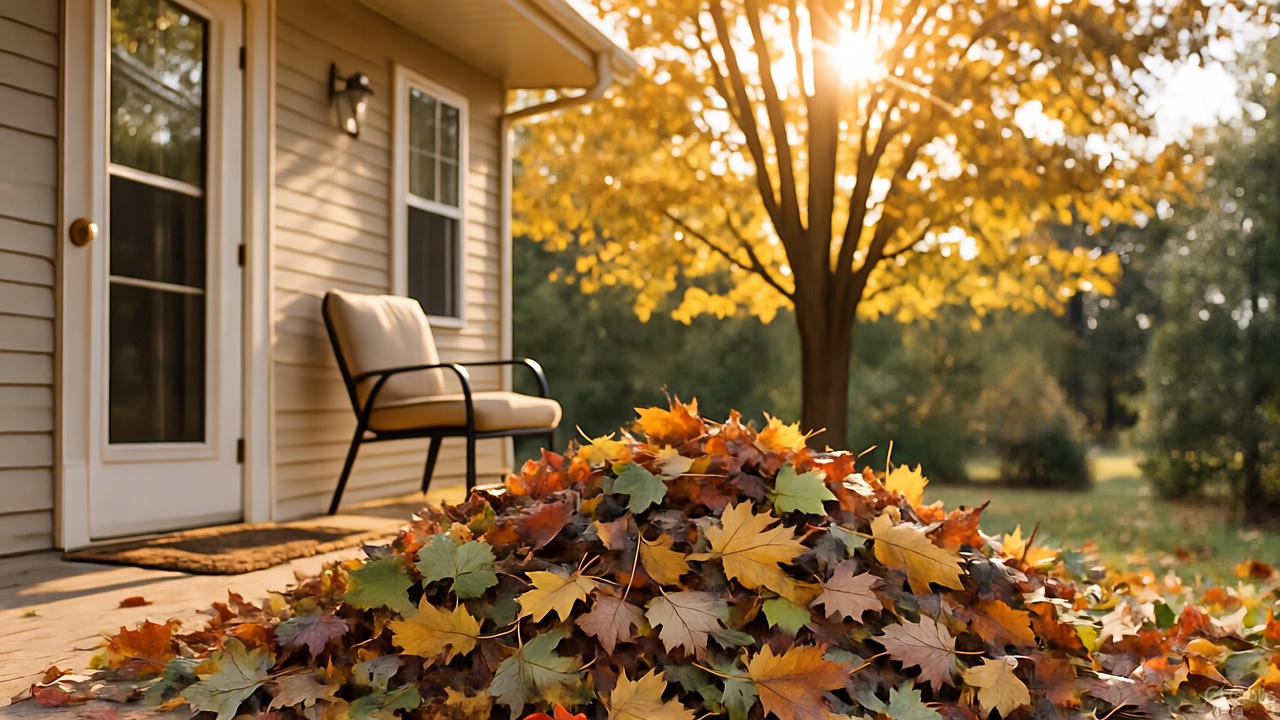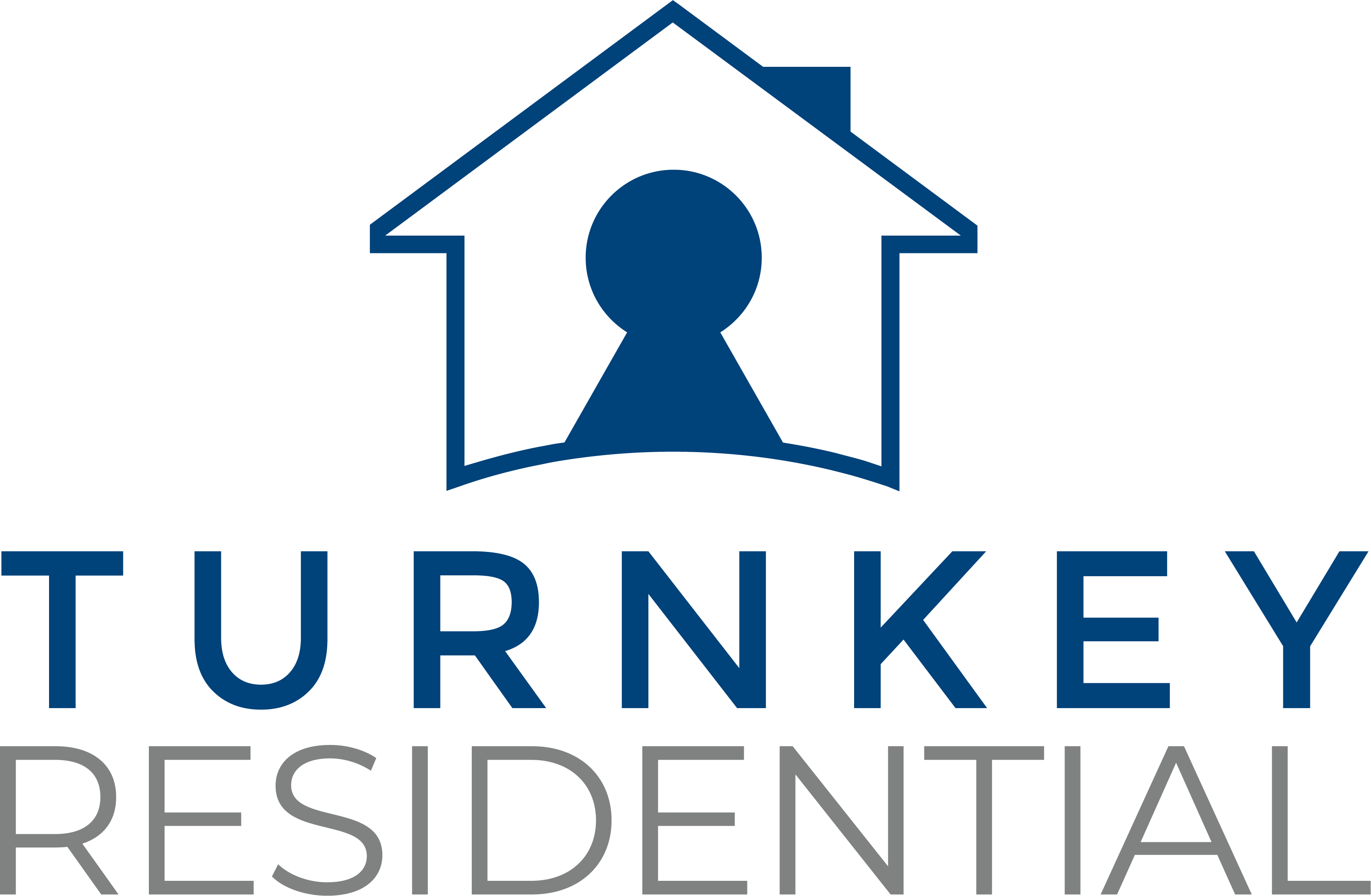Fall Maintenance Checklist for Tenants
As the leaves change and the air turns crisp, it's time to prepare for the upcoming fall and winter months. Proper fall maintenance ensures your comfort and safety. Here is a comprehensive fall maintenance checklist to guide you through the essential tasks that responsible tenants should complete. By following these steps, you can help keep your rental property in good condition and avoid potential issues down the road.
Exterior Maintenance:
- Clean Gutters and Downspouts: Clogged gutters can lead to water damage. Ensure they're clear of leaves and debris.
- Roof Inspection: Check for damaged or missing shingles and promptly report any issues.
- Window and Door Sealing: Prevent drafts by inspecting windows and doors for gaps and sealing them with weatherstripping or caulking as needed.
- Exterior Lighting: Replace burnt-out bulbs to maintain safety and security around your property.
Yard and Landscape:
- Lawn Care: Keep the property looking neat by raking leaves, trimming overgrown bushes, and reporting significant landscaping concerns.
- Outdoor Furniture: Protect outdoor furniture from the elements by storing it or using covers.
- Winterize Garden Hoses: Disconnect and store garden hoses to prevent freezing and damage.
- Trim Tree Branches: Trim branches that could pose a hazard during winter storms.
Heating and Insulation:
- HVAC Maintenance: Change HVAC filters and ensure your heating system is in good working order.
- Insulation Check: Search for drafts around windows and doors; report any issues.
Safety Checks:
- Smoke and Carbon Monoxide Detectors: Test detectors and replace batteries as needed. Notify us of any malfunctions.
- Fire Extinguishers: Ensure fire extinguishers are fully charged and easily accessible.
- Emergency Kit: Prepare an emergency kit with essentials like flashlights, batteries, and non-perishable food items.
Interior Maintenance:
- Clean and Declutter: Keep living spaces and storage areas tidy, disposing of unnecessary items.
- HVAC Vents: Vacuum or clean vents to improve indoor air quality.
- Appliance Care: Clean appliances such as the stove, refrigerator, and dishwasher.
- Draft Prevention: Use draft stoppers or weatherstripping to seal gaps around windows and doors.
- Plumbing Checks: Look for and report any leaks or plumbing issues.
Winter Preparation:
- Thermostat Settings: Adjust your thermostat for energy efficiency and to prevent frozen pipes.
- Emergency Contacts: Keep a list of emergency contacts, including your landlord, readily available in case of issues.
General Tips:
- Effective Communication: Promptly report maintenance concerns.
- Renter's Insurance: Consider getting renter's insurance to protect your belongings in case of unforeseen events.
By following this Fall Maintenance Checklist, you'll not only make your living space more comfortable but also demonstrate your responsibility as a tenant. Plus, your proactive approach can help prevent costly repairs down the road and contribute to a harmonious landlord-tenant relationship. Embrace the changing seasons and keep your rental property in top shape!
15 Pro Tips to Keep Your Home Safe While Traveling
- Make a pass around your house to make sure all your windows are closed and locked, as well as any side or back doors.
- Check your landscaping as an overgrown or unkempt lawn can be a sign that no one is home. Overgrown shrubs can also shield burglars from street view.
- Do a full perimeter check of your home by checking every door, window and access point.
- Close your home’s blinds making it difficult for an unwanted visitor to assess whether your home is occupied.
- Be sure to arm your alarm system. You can also get in touch with your provider to notify them of your travel plans and whether you are expecting anyone at your house while you are away.
- Check your doorbell camera if you have one to ensure it is working and that it provides a clear, unobstructed view of people at your front door.
- Make sure your video devices are fully functional, lenses clean, batteries charged, and apps connected. Confirm sensors, motion detectors, and your monitoring service are all in sync.
- Don’t forget to check your smoke and carbon monoxide detectors and replace batteries if needed.
- Mail and packages can easily pile up when you are gone, signaling that your home is unattended. An easy solution is to put your mail on hold and ask a neighbor or friend to grab your packages left at your doorstep.
- Sliding doors can be a weak point in your home’s security. Use a security bar or even a broomstick in the track to prevent forced entry.
- Schedule your outdoor lighting to illuminate the doorways and dark areas around your home. You can also put a timer on a few indoor lights to help your home look more occupied.
- Cut power to remote openers and use a manual lock.
- Most people are generally aware of common places to look for spare keys – under the welcome mat, above the door frame, under a potted plant, etc. Instead, give your spare key to a house sitter or neighbor in case of an emergency.
- Notify close neighbors of your plans and if you are expecting visitors. In case of an emergency or suspicious activity, they can call the authorities and notify you.
- It is tempting to post your trip on social media, however, wait until you are back to share trip photos – don’t signal that your home is empty.
Friendly Reminder About Your Air Filter!
Restricted, dirty air filters are #1 cause of trouble for your furnace or A/C system and can significantly reduce the life of the system if not taken care of properly. Make sure to check your filters every 3 months for optimum performance and to protect the hvac. Make yourself a note on your calendar to do this or put a post-it-note on your refrigerator so you don’t forget. Professional hvac companies do not recommend the pleated high efficiency filters or the “lifetime” filters as they are too restricting for furnaces. Preferably, look for lightweight glassfloss types.
Garbage and Recycling Preparation
We need your help to make sure curbside collection goes smoothly. Please read the below information on the process to properly prepare your waste for collection.
- Bag garbage before placing it in the cart to keep car clean, lessen odors, and reduce litter problems. Loosely place recycle items in the recycle cart. No plastic bags will be accepted in recycle cart.
- Use only city or vendor issued carts – no other carts or containers will be serviced by personnel.
- Carts placed at townhomes or condos must be labeled with the street address or unit number.
- Place garbage and recycling carts a few inches from the curb or edge of the street – not in the street.
- Place carts at least five feet from other objects (vehicles, mailboxes, fences, etc).
- The lid on a full cart should not be open more than 12 inches wide.
- Position carts so that cart handle faces your house. This will ensure the lid opens properly and is not damaged when emptied.
- Place cart at the curbside no earlier than noon the day before your collection day an dno later than 6a.m. on collection day.
- Vehicles parked near waste carts may prevent curbside collection service.
- Move carts from curb/street by 7p.m. the day after collection.
- Carts should be stored where they cannot be seen from the street.
Need Handyman Services to change light bulbs, hang a ceiling fan, tv, or shelves?
Reach out to Turnkey Residential Services at 919.213.1869 or services@turnkeync.com
Recycling Do’s and Don’ts – Recycle the Correct Way!
Recycle plastic bottles, tubs, jugs, and jars: Recycle plastic bottles, tubs, jugs, and jars with lids, including laundry detergent jugs, milk cartons, drink bottles, dairy containers, dish soap containers, and condiment containers. Empty and rinse clean. No pumps please.
Recycle Glass Bottles and Jars: Recycle glass bottles and jars after emptying and rinsing. Examples of glass jars include baby food jars, wine bottles, beer bottles, tomato sauce jars, jelly jars, and glass condiment jars.
Recycle Metal Cans: Recycle metal cans after emptying and rinsing. Examples of metal cans include dog and cat food, tuna cans, soda cans, fruit cans, and soup cans.
Recycle Paper, Cartons, and Cardboard: Recycle paper products. Examples of paper products include cereal boxes, disposable coffee cups, juice cartons, cardboard boxes (flatten cardboard), empty paper towel and toilet paper rolls, envelopes, magazines, paper, newspaper, chip cans, and brown paper grocery bags.
Don’t Recycle These Items: Don't recycle aerosol cans, batteries (car, lithium, etc), aluminum foil, ceramic items, clothing/textiles, diapers, electronics, food-tainted items, hazardous waste, household glass, medical waste, plastic bags/wrap, plastic cups, plastic lids, straws, scrap metal/wood, shredded paper, styrofoam/peanuts, tanglers (cords, hoses, wires, etc.), tires, or toys.
For payments, service requests, or to access your account, please visit turnkeync.rentvine.com/resident.
In case of an emergency, please call 919.213.1869.
Around the Home Tips
- 8 Easy Gardening Habits That Keep Away Pests and Diseases. Read More
- 10 Surprising Ways to Use Hydrogen Peroxide: Read More
- When you Should Get a New Home Security System. Read More
- Creative Ways to Use Shout Stain Remover: Read More
- Your Fall Garden – What to Plant, Prune, and Prep in September. Read More
- 15 Fall Garden Favs that Keep the Color Coming. Read More
- 7 Best Perennials to Plant in September Before Weather Gets Cool: Read More
- 5 Ways to Use Apple Cider Vinegar: Read More
- How to Get Rid of Ticks in Your Yard: Read More
- 7 Surprising Ways to Use Fabric Softener Around the House: Read More
- 6 Genius Cleaning Products for Pet Owners: Read More
- What to do With Old Pillows: Read More
- 19 Simple Zero-Waste Swaps that Save Money & Help the Planet: Read More
- Top 10 Space Saving Items for Small Bathrooms: Read More
- 10 Surprising Uses for Baby Wipes: Read More



